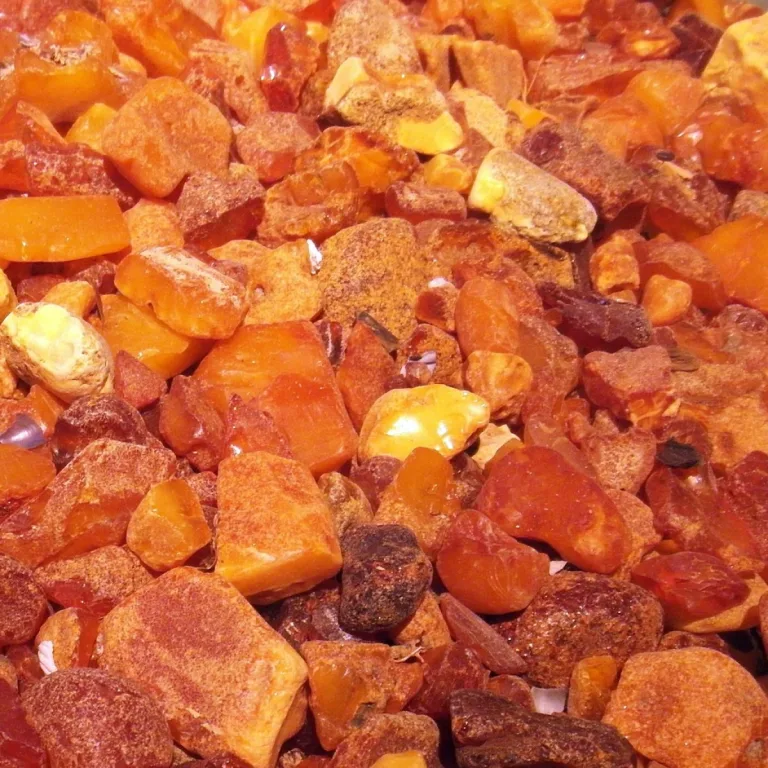D-mannose (also called Carubinose, D-manosa, Mannose, and Seminose) is a type of simple sugar related to the more famous glucose. These both simple sugars are similar, as they consist of just one molecule of sugar, and exist naturally in your body. To be more specific, D-Mannose in your body is produced from glucose. D-Mannose and Glucose are also found in some plants in the form of starch (15, 21).
But why is it used to treat urinary tract infections, and why D-Mannose supplements are gaining more and more popularity?
In this article we answer these questions and write about the D-Mannose uses, the research behind it, urinary tract infection symptoms, prevention, and treatment, as well as suggested D-Mannose dosages.
Firstly, What Is D-Mannose?
D-mannose (C6H12O6), named also Carubinose, D-manosa, Mannose, Seminose is one of the nine natural monosaccharides (simple sugars) which are:
- D-glucose
- D-galactose
- D-mannose
- D-xylose
- L-fucose
- D-glucuronic acid
- N-acetyl-D-glucosamine
- N-acetyl-D-galactosamine
- N-acetylneuraminic acid
D-Mannose is found in some fruits, berries, and vegetables. In the human body, D-mannose is predominantly synthesized from glucose or is derived from the breakdown of endogenous glycoconjugates (17).

D-Mannose In Nature – Foods That Contain D-mannose
Although quite many berries, fruits, and vegetables contain free D-mannose, the mannose content in these foods is relatively small. Moreover, also the bioavailability of mannose for glycan synthesis in these sources is poor, and probably only partially improved by anaerobic bacteria in the colon. Therefore, dietary mannose is not considered a noteworthy source of D-mannose for humans.
Foods that naturally contain D-mannose, include:
- Cranberries (and cranberry juice)
- Blueberries
- Oranges
- Apples
- Green beans
- Mangos
- Aloe vera
- Seaweed
- Peaches
- Black and red currants
- Cabbage
- Tomatoes
- Broccoli
- D-mannose is also found in the form of galactomannans (indigestible plant polysaccharides) in guar gums, coffee beans, and fenugreek (15, 17, 18, 20, 21).
Luckily, bioavailable D-mannose is available in the form of supplements, such as D-mannose powders or capsules.
D-Mannose Uses And Health Benefits
Conditions in which D-Mannose may be helpful include:
- Carbohydrate-deficient glycoprotein syndrome type 1b. This rare hereditary disease causes you to lose protein through the intestines. However, some reports state that D-mannose may make your liver work better and also slow down this protein loss. In addition, it may lower blood sugar and lessen bleeding disorders in people with this condition.
- Dysbiosis, an imbalance of good and bad bacteria. In some animal studies, the components of D-mannose have been shown to escalate the growth of “good” bacteria and be therefore useful as prebiotics (substances that may help your body by encouraging the growth of beneficial bacteria in your digestive system). Prebiotics, though, may be extremely helpful for people with dysbiosis.
- Urinary tract infections (UTIs). Last, but not least, D-Mannose is mostly used to prevent or treat UTIs. Early clinical trials in Europe and the U.S. demonstrate that D-mannose supplements stop particular bacteria from sticking to the bladder walls, and may thus also treat or prevent UTIs. Researchers think that the bad bacteria causing infections will stick to the sugar instead of the bladder walls which helps the bacteria leave the body through your urine. The lower amount of bad bacteria in the bladder decreases your risk of UTIs (21).
Based On Science, D-Mannose Might Be As Effective As Antibiotics In Preventing Urinary Tract Infections
According to several studies, D-Mannose might be as effective as antibiotics in treating acute urinary tract infections and recurrent urinary tract infections.
For example, in one study of more than 300 women with recurrent urinary tract problems, the women were divided into three groups: the first group received 2 g of D-Mannose over six months, the second 50 mg of antibiotic, and the third group – no treatment at all.
Only 15% of those receiving D-Mannose had a recurrent urinary tract infection, compared with 20% of women receiving antibiotics (both outcomes were significantly better than those not receiving treatment).
However, there were significantly fewer side effects in the D-Mannose group than in the antibiotic group. Therefore, D-Mannose seems to treat urinary tract infections as good ad antibiotics (11, 13, 14, 16, 17, 18, 19, 22).

Why Is It Better To Treat UTIs Naturally With D-Mannose
But why would you prefer D-Mannose instead of antibiotics if they work equally well, and why is it so important to treat UTIs and cystitis naturally?
Usually, UTIs reoccur, and as much as 40 percent of women get another UTI within 6 months after the previous one. For the treatment of acute UTIs, antibiotics are usually your doctor’s first choice. But those who suffer from urinary tract infections frequently may also need repetitive antibiotic treatments.
Usually, women with recurrent urinary tract infections receive a low-dose antibiotic for as long as 6 to 12 months after infection.
However, although studies have proven antibiotics to be an effective treatment for UTIs, there is a risk that long-term antibiotic use will increase the risk of bacteria causing UTIs – becoming resistant to antibiotics.
Sadly, that has already happened, and antibiotic resistance is increasing among UTI pathogens. This kind of antibiotic resistance related to uropathogens, especially UPEC, is expected to increase even more in the future. This leads to high demand for alternative treatment options. Luckily, D-Mannose may be the one safe cure long time searched for, as antibiotics may also have other unwanted side effects.
Therefore, people who suffer from UTIs frequently, going through urogenital procedures, or women with changed bacterial environments in the urogenital area would benefit the most from a non-antibiotic alternative.
And this is the reason why so many turn to D-Mannose. It’s because D-mannose is thought to naturally stop certain bacteria from expanding in the urinary tract, and thus prevent and treat urinary tract infections (UTIs) or bladder inflammation (cystitis).
So, even if you take antibiotics – taking these together with D-mannose may increase the success of your treatment. D-Mannose seems to have great potential with minimal side effects also in UTI prophylaxis (15, 17, 18, 20, 25).

About D-Mannose Supplements
D-Mannose supplements are designed to support, purify and protect the bladder and the urinary tract either as a standalone product or combined with probiotics or cranberry extract. In most cases, urinary tract infections can be successfully treated without antibiotics using only D-Mannose.
Therefore, in case of urinary tract infections and cystitis, you can first try D-Mannose supplements. However, you should keep in mind that D-Mannose can be helpful only for urinary tract infections caused by a strain of E.coli, also called UPEC bacteria (uropathogenic Escherichia coli). Though, they account for 80%-90% (or even more) of all uncomplicated infections, and about 65% of complicated infections (1, 24, 26, 27).
D-Mannose does not upset the balance of the body’s normal microflora and is said to be safe even for pregnant women and infants. In less than 10% of cases where the infection is not caused by E. coli, there is enough time to start antibiotic treatment.
Dr. Jonathan Wright, who is the Medical Director of Tahoma Clinic in Tukwila, Washington, and an author of “D-Mannose and Bladder Infection: The Natural Alternative to Antibiotics” was one of the first who used D-Mannose in the treatment of UTIs already 20 years ago, and his experience in treating his patients has shown that D-mannose is effective in 85-90% of cases.
He explains that taking D-mannose binds to the E. coli bacterium so that the urine successfully flushes it out out. When people take D-mannose, most of it enters the urine through the kidneys and covers all the E. coli cells there, so that they can no longer attach to the inner walls of the bladder and urinary tract.
In this way, the E. coli bacterium will be washed out of the urinary tract during urination. D-mannose is said to help with acute urinary tract infections, prevent recurrent infection in women who are prone to it, and prevent post-intercourse urinary tract infections.
Urinary Tract Infection Treatment – How Much D-Mannose To Take?
Dr. Wright recommends the following doses for acute urinary tract infections and for preventing urinary tract infections:
- For active urinary tract infections:
-
- For adults: Take 4 capsules or 1 teaspoon (about 2 g) of D-mannose dissolved in a glass of water after every two to three hours.
- For children: Take 2 capsules or 1/2 to 1 teaspoon (0.5-1 g) of D-mannose dissolved in a glass of water after every two to three hours.
- Take for 2–3 days after your symptoms pass. You can continue with a preventive dose of just one teaspoon per day. There is no need to continue D-Mannose administration after your symptoms clear up.
- To prevent urinary tract infections that usually happen after some trigger (such as having sex or taking a tub bath): If possible, take one dosage one hour before, and another dosage immediately after the activity that triggers your symptoms (1, 3, 4, 5, 6, 12).
Why Doesn’t Your Doctor Suggest You Use D-Mannose?
Firstly, doctors should follow official treatment instructions. If not, they risk lawsuits and dereliction of duty.
Secondly, due to the fact that D-Mannose is a natural supplement that is not well regulated by laws, there is a notable variation in the quality of D-Mannose supplements available. This makes it hard to predict how effectively certain supplements will work.
Thirdly, evaluating D-Mannose would require notable financial investments from pharmaceutical companies, and those investments would not be profitable because D-Mannose is a naturally occurring substance that cannot be patented. Therefore, it is not financially attractive to pharmaceutical companies.
Many doctors suggest cranberry supplements for urinary tract infections treatment. However, those have not been equivocally proven to cure UTIs (23).
Ecosh is one of the most recognized manufacturers and sellers of high-quality supplements and vitamins worldwide. Ecosh Life ISO 22000: 2018 certificate No. EST208720F issued by the certification company Bureau Veritas certifies that the company meets the requirements of the European food safety management system quality standard.

Urinary Tract Infection Signs and Symptoms – How Do I Know If I Have a Urinary Tract Infection (UTI)?
Urinary tract infections happen when bacteria (usually E,coli strain UPEC bacteria) infect the urinary tract, which includes urethra, bladder, ureters and the kidneys. UTIs mostly affect women (18).
Common signs and symptoms of urinary tract infection in adults may include:
- Pain or a burning or stinging feeling when urinating (dysuria).
- Need to urinate more often than usual during the nighttime (nocturia).
- Mostly peeing only in small amounts at a time.
- Cloudy urine.
- Need to urinate suddenly, more often, and more urgently than usual.
- Urine that smells differently and worse than it should.
- Pain around the pelvis.
- Discomfort or pain in the lower abdomen or your back (just under the ribs).
- Blood in the urine.
- Feeling hot and shivery or a high temperature.
- Or in contrast, a very low temperature such as below 36C.
- Fever, nausea or vomiting, back pain or pain in the side or groin (a sign that the infection might have spread to your kidneys) (1, 2, 12, 18).
Signs and symptoms of urinary tract infection in children may include:
- High temperature. It feels hot if you touch your child’s tummy, back, or neck.
- General unwellness and being irritable.
- Accidental daytime wetting that wasn’t happening before.
- Being sick, vomiting, and a drop in appetite (12).
The most common signs and symptoms of urinary tract infection in older, frail people or people with a urinary catheter may include:
- Behavioral changes, such as mental confusion or agitation.
- Involuntary urination more than usual.
- Fatigue (prolonged tiredness).
- Shaking (rigors) or shivering (12).

Urinary Tract Infection (UTI) Causes
Most of the time (about 80 – 90% of the infections), the culprit who causes urinary tract infections is bacteria E. coli (strain UPEC). We all have E.coli bacteria living on our skin and intestines, and usually, this bacteria does not cause any problems. However, when bacteria get into the urethra and begin to multiply there, they can finally lead to an infection.
The cell walls of E. coli are covered with tiny finger-shaped extensions called fimbriae, which allow them to attach to the inner wall of the bladder and even move upwards into the urethra and kidneys. Because these bacteria attach to the urinary wall, they are not as easy to flush out with urine. These tiny finger extensions form from lectin, a glycoprotein that consists of amino acids and polysaccharide chains. This makes them sticky.
The lectin in bacterial fimbriae binds to mannose produced by the body’s cells, which covers the mucous membranes of the urinary tract. This mannose allows bacteria to attach to the inner surface of the urinary tract.
What’s worse, if the bacteria travels from the bladder into the kidneys, a more serious problem such as kidney infection may result. Therefore, it’s extremely important to treat your urinary tract infection immediately.
Several factors can lead to urinary tract infection and the common reasons how the bacteria can get in include:
- Frequent sexual intercourse, and not urinating straight away after sexual intercourse may also lead to urinary tract infection.
- Having sex with a new partner.
- Using a tampon.
- Using a spermicide or a diaphragm for birth control.
- Wiping from back to front after you go to the bathroom or not keeping the genital area clean and dry.
- Not fully emptying your bladder when urinating or conditions that make it difficult, such as constipation in children and an enlarged prostate gland in men.
Other causes and risk factors of urinary tract infections include:
- Allergies. Persistent exposure to allergens shifts your body’s immune system toward fighting an allergen instead of protecting you from viruses and bacteria. Thus, people with allergies are more likely to have frequent urinary tract infections.
- Hormonal imbalance. Due to changing hormones, women are more prone to urinary tract infections during puberty or menopause. This is because hormonal changes affect the number of Lactobacilli (which is a good bacteria that helps protect from E. coli colonization) in their vaginas.
- Changes in the urinary tract.
- Pregnancy.
- Not consuming enough fluids.
- Weakened immune system, for instance due to having chemotherapy.
- Undergoing a kidney or bladder infection within the past 12 months.
- Health conditions that block the urinary tract, such as kidney stones.
- Urinary catheters (a tube in your bladder used to drain urine).
- Sexual activity at a young age.
- Higher age in general.
- Specific conditions such as diabetes, and neurologic conditions (1, 2, 6, 7, 12, 18).

Urinary Tract Infection Prevention Is Better Than Cure
Although D-Mannose is an excellent supplement, it’s only a part of the cure. If you want to prevent urinary tract infections naturally without taking antibiotics You’ll need to practice a holistic approach.
You can prevent or even treat most urinary tract infections if you follow the tips below and take D-Mannose as soon as first symptoms appear.
However, inflammation of the kidneys can sometimes occur despite preventive measures. If you suspect kidney inflammation (symptoms include fever and pain in the back, side, groin, or abdomen), you may need to see a doctor and take antibiotics to prevent the infection from spreading to the kidneys, where it can become life-threatening and lead to kidney loss.
What else can you do for a healthy urinary tract besides taking D-Mannose? As urinary tract problems are much more common in women than in men, the recommendations below are for women.
Although there’s no absolutely sure method to prevent a bladder infection, by following these tips and using the D-Mannose supplement, it is possible to create an environment in the urinary tract that promotes the growth of good bacteria and helps keep bad bacteria away (23).
19 Tips For Preventing Urinary Tract Infections Naturally
- Avoid scented soaps, bubble baths, powders, sprays, and other hygiene products that contain perfumes. These may irritate your intimate area.
- Avoid tight, synthetic underwear (for example nylon).
- Do not hold your pee.
- Do not consume too many sugary foods or alcoholic drinks, as they may irritate your bladder or encourage bacteria to grow.
- Avoid hot tubs and jacuzzis.
- If possible, try to avoid condoms or diaphragms with spermicidal lube on them.
- Drink enough liquids such as cranberry juice and pure water, as according to some studies, cranberry juice may be helpful in preventing a bladder infection. The color of your urine indicates whether you have consumed enough liquids. The brighter the better.
- Consult with your doctor about other birth control options if you are using spermicide or diaphragm.
- Cotton underwear and nonbinding, loose clothing do not trap moisture and heat. Therefore you may want to wear these.
- Prefer to take a shower over a bath.
- Get rest.
- An infrared sauna with dry air is best.
- Use unbleached and unscented toilet paper.
- In addition, if possible, prefer to use a bidet over toilet paper.
- If you feel the need to urinate, do so, and do not delay going to the bathroom.
- Keep your genital area clean and dry and also clean your intimate area with water before and after sexual intercourse. If possible, pee straight away after having sex.
- When urinating, try to empty your bladder entirely.
- After going to the bathroom, always wipe your bottom gently from front to back. This helps to prevent bad bacteria from getting into the urethra and finally the bladder.
- Immediately change incontinence pads or nappies if they’re soiled (1, 12).
D-Mannose Side Effects
In general, most people tolerate D-Mannose well, and don’t experience any side effects. However, for some people side effects of D-Mannose may include:
- Loose stools
- Bloating
- Diarrhea
You should certainly first consult your doctor before taking D-Mannose if you are pregnant or breastfeeding. Because although D-Mannose is said to be safe – there have not been sufficient studies done on its safety in these circumstances.
Also, talk to your doctor before taking D-Mannose if you have diabetes, as it may make it difficult to control your blood sugar. Do not take D-Mannose more than needed, because extremely high doses of D-Mannose may lead to kidney damage.
In conclusion, if you have an active urinary tract infection, do not delay in consulting your doctor and starting immediate treatment, because an active infection can spread into the kidneys and blood (15, 21).
NB! The information provided here is for informational purposes only, so do not consider it as health care or medical diagnosis and treatment. Do not consider this information as a guarantee of the results you want to achieve. In addition, do not take this information as a replacement for the advice of your physician or other healthcare professional.
Even more, you should not use it to diagnose or treat a health problem. Before changing or discontinuing your existing medication, treatment, or care, or taking any dietary supplements, be sure to consult with your healthcare professional or doctor before starting any diet or program, or if you suspect you may have a medical condition.
Written by Maria-Helena Loik
Sources:
- What Are Bladder Infections? What Causes Them? (webmd.com)
- Bladder infection: Causes, treatments, and remedies (medicalnewstoday.com)
- 7 of the Best Natural Remedies for Bladder Infections (coastalurgentcareruston.com)
- Efficient and Cost-Effective Alternative Treatment for Recurrent Urinary Tract Infections and Interstitial Cystitis in Women: A Two-Case Report (nih.gov)
- Using garlic to combat antimicrobial-resistant urinary tract infections — ScienceDaily
- Dr. Wright’s Protocol: D-Mannose And SSKI For UTI Treatment – Stop UTI forever
- Estrogen and UTI prevention – Stop UTI forever
- An introduction to the epidemiology and burden of urinary tract infections (nih.gov)
- Cystitis epidemiology and demographics – wikidoc
- Urinary tract infections (UTI) – Better Health Channel
- Use of d‐mannose in prophylaxis of recurrent urinary tract infections (UTIs) in women – Wiley Online Library
- Urinary tract infections (UTIs) – NHS (www.nhs.uk)
- Oral D-mannose in recurrent urinary tract infections in women (sagepub.com)
- 2920-2925-D-mannose: a promising support for acute urinary tract infections in women (europeanreview.org)
- D-Mannose for UTI: Dosage, Treatment, Side Effects, and More (healthline.com)
- D-mannose: a promising support for acute urinary tract infections in women. PubMed (nih.gov)
- Role of D-mannose in urinary tract infections – a narrative review | Nutrition Journal (biomedcentral.com)
- D-mannose: Uses, UTIs, benefits, and risks (medicalnewstoday.com)
- D-MannosE to prevent Recurrent urinary tract InfecTions (MERIT) | BMJ Open
- D-Mannose: Benefits, Side Effects, Dosage, and Interactions (verywellhealth.com)
- D-Mannose: Uses and Risks (webmd.com)
- D-Mannose For UTI: Dosage, Benefits, Side Effects (liveutifree.com)
- 5 FAQ: D-mannose For UTI: Dosage, Frequency, And More – Stop UTI forever
- D-mannose – Chronic UTI Info
- Urinary tract infections | Office on Women’s Health (womenshealth.gov)
- Uropathogenic Escherichia coli – PubMed (nih.gov)
- Non-antibiotic options for recurrent urinary tract infections in women | The BMJ


